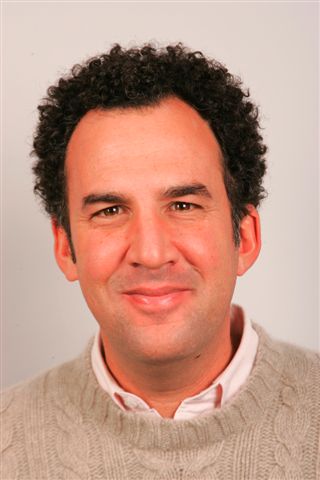 Why do we keep playing this maddening game of golf? It’s so hard, so frustrating, so elusive in so many ways. Yet we keep coming back. And in the end, it’s not really maddening at all, is it? There’s too much going for it in the other direction: exercise, fresh air, fellowship, laughs, competitiveness, memory and emotion and the beauty of the playing field itself.
Why do we keep playing this maddening game of golf? It’s so hard, so frustrating, so elusive in so many ways. Yet we keep coming back. And in the end, it’s not really maddening at all, is it? There’s too much going for it in the other direction: exercise, fresh air, fellowship, laughs, competitiveness, memory and emotion and the beauty of the playing field itself.
Golf seeps into our lives in so many deeply rooted ways that we can barely imagine living without it, even, or at least soon after, we feel like pitching our golf bags into a lake. Two recent volumes delve into the attractions of the game, one from an architectural angle, another from the emotional route.
The former is The Golf Architecture of Donald Ross by Bradford A. Becken, Jr. The book’s byline could conceivably spark some barroom debate: “A Study of the Work of America’s Greatest Golf Course Designer.” But no one even remotely interested in course architecture would deny Ross his niche in the pantheon of the best designers the game has ever seen. Becken unearths this Tom Doak quote: “Ross’ 50th best course is better than the single best design of most living architects. His 100th might be, too.”
After Ross transplanted himself from Scotland his design career began in earnest, beginning in 1900 in Massachusetts and ending with his death at 75 in Pinehurst, North Carolina in 1948. He is credited with some 420 designs or redesigns in North America (and a few in Cuba). According to Becken, “approximately 365 of which still continue to be enjoyed by golfers to this day.”
He should know: he’s played every one of them. He’s also the president of the Donald Ross Society, which aims to help preserve or restore Ross designs. Becken is not an architect himself, and didn’t take up golf into well into his thirties. But when he did he caught the bug, in particular the Ross bug, big time.

If anyone should be familiar with Rossian tendencies, it’s Becken. This is not a biography of Ross. (Books by Bradley Klein and Chris Buie should suffice in that regard.) What it is is a detailed examination of Ross courses, detailing every aspect of how Ross handled the teeing grounds, first holes, second shots, short par-3s, long par-3s, short and long par-4s, par-5s, bunkering, greens–you name it, it’s here, packed with plenty of photos and copies of design schematics with comments by Ross.
The book is published by Classics of Golf in a $49.95 digital version available through Amazon, which is how I read it. And while it’s a handsome volume in that format, real golf design geeks, and Ross adherents in particular, might want to lay hands on the $395 9”x12” bound limited edition, signed and numbered (but only up to 500).
It’s exhaustive, gold for the true believers. For the casual architectural fan a complete read through may be more exhausting, but there’s nothing to prevent just dipping in when you want the skinny on when Ross put a bunker behind a green. Not something he normally recommended, but as Becken consistently emphasizes, there were always exceptions to broad Ross principles. It is unwise, he notes, to ever say, “Ross always did this,” or “Ross never did that.” Because sometimes he did, and sometimes he didn’t.
And Becken frequently quotes Ross to the best effect: ““The repeated loss of balls by those to whom the [water] hazard is difficult is apt to create dissatisfaction.” “It’s a beastly nuisance, when starting off play and before getting limbered up, to drive a ball out-of-bounds. It generally means delay, loss of a ball, vexation, and even profanity.”
Even profanity. Imagine that.
<<<>>>
 Michael Bamberger has been no stranger to praise here. Previous tips of the cap went to his Men in Green and The Second Life of Tiger Woods, not to mention the roman à clef about Woods he co-wrote with Alan Shipnuck, The Swinger.
Michael Bamberger has been no stranger to praise here. Previous tips of the cap went to his Men in Green and The Second Life of Tiger Woods, not to mention the roman à clef about Woods he co-wrote with Alan Shipnuck, The Swinger.
He’s as reliable and entertaining a writer on the pro game as anyone wielding a keyboard. And he delivers this time out, too, with The Ball in the Air: A Golfing Adventure (Avid Reader Press, $30). The difference being that, despite a strong cameo appearance by Lee Trevino, this book isn’t about the pros at all, but about four disparate amateurs. In telling their stories, Bamberger attempts to get at the essence of the game itself.
The book is broken down into three sections: Starting, Turning, Finishing, as he traces his subjects’ beginnings in the game and then onward. He’s one of the foursome, his own story of how he came to be bewitched by the game in his youth despite no one else in his family playing it; his borrowed his first set of clubs from his dentist’s wife. But the spotlight is really on the rest of the foursome:
>> Pratima Sherpa, who grows up in the maintenance shed of the Royal Nepal Golf Club in Kathmandu, where her father worked, and who takes her first swings with a stick he whittles for her.
>> Sam Reeves, born in 1934 to a family of well-to-do cotton merchants in Georgia, who takes up the game at ten years of age.
>> Ryan French, who starts playing at six with his dad in Alpena, Michigan, and is transfixed at a young age by golf statistics.
In the “Starting” section Bamberger weaves the strands of these three together as their lives—and their relationship to golf—begin to change. For Pratima, it’s an upward journey, as her skills at golf become such that she becomes the subject of articles that set off a series of opportunities, ones that ultimately bring her to the U.S. to play college amateur golf.
For French, it’s more of a collision course, as years of relentless work and fast living (off and on the golf course) lead him to the brink of suicide. For Reeves, golf is a long game, as he takes the family business to greater, international scope, giving him a humanistic view he tries to impart to his growing family.
In the “Turning” section we thankfully see French retreat from the brink, start a family and go on to turn his statistical fascination into a successful writing career concentrating on the lesser-knowns in professional golf, the Monday qualifiers, the strivers—to the point that he is now one of Bamberger’s colleagues in the writers group, the Fire Pit Collective.
Reeves, meanwhile, keeps dipping back into his golf game as his life goes on and time permits, becoming the oldest amateur to make the cut at the Pebble Beach National Pro-Am.
Since Pratima is still basically “starting” we see little of her in the subsequent sections, one quibble I have with the book; the opening section balances the lives of the three so well that it feels a little like a wheel has fallen off from there on out. But it’s a quibble.
Bamberger has always seemed to me to be a bit of a pointillist in prose. He puts the sentences on the page and the paragraphs don’t always seem to relate to each other clearly. To mix the metaphor, it’s a bit of a juggling act; there seems to be a lot of stuff in the air, and you’re not sure everything is going to land properly.
 But then it does. And the picture looks pretty clear, colorful, satisfying. You’re not quite sure why or how, you’re just glad it is. Kind of like golf, which is what it’s all about.
But then it does. And the picture looks pretty clear, colorful, satisfying. You’re not quite sure why or how, you’re just glad it is. Kind of like golf, which is what it’s all about.
This piece first appeared, in slightly different form, in the April-May 2023 issue of Golf Oklahoma.

